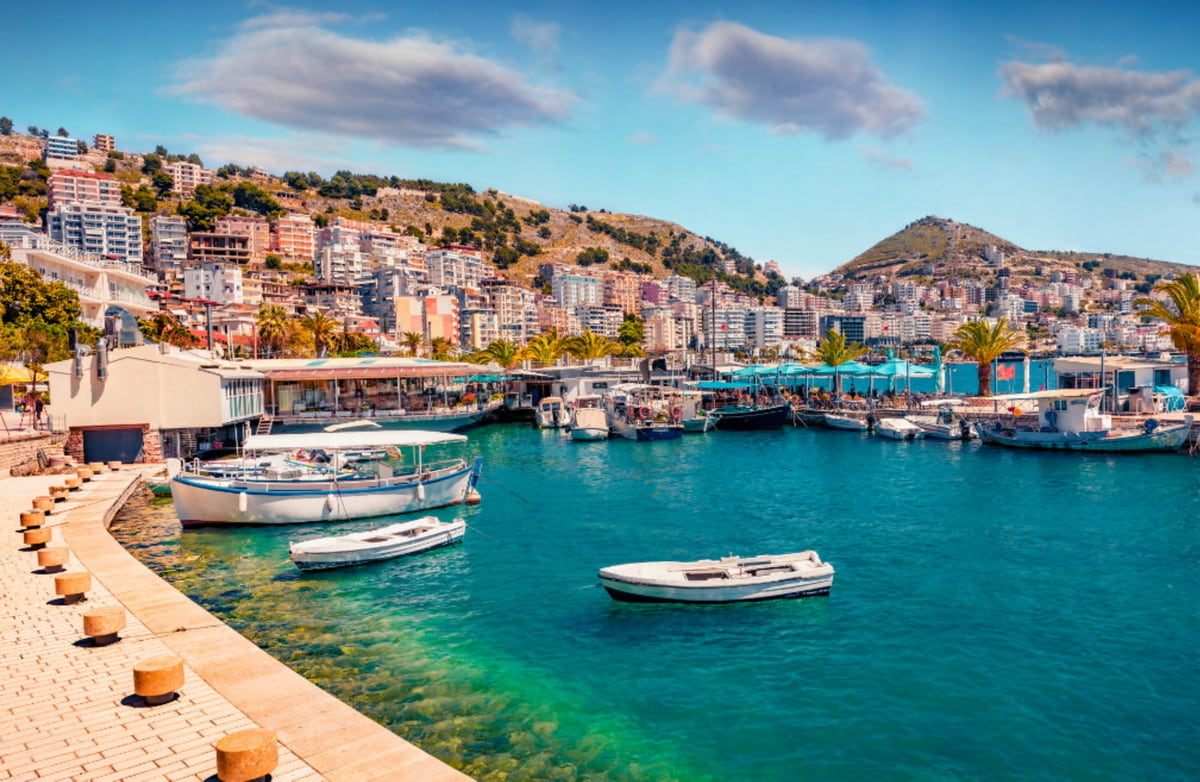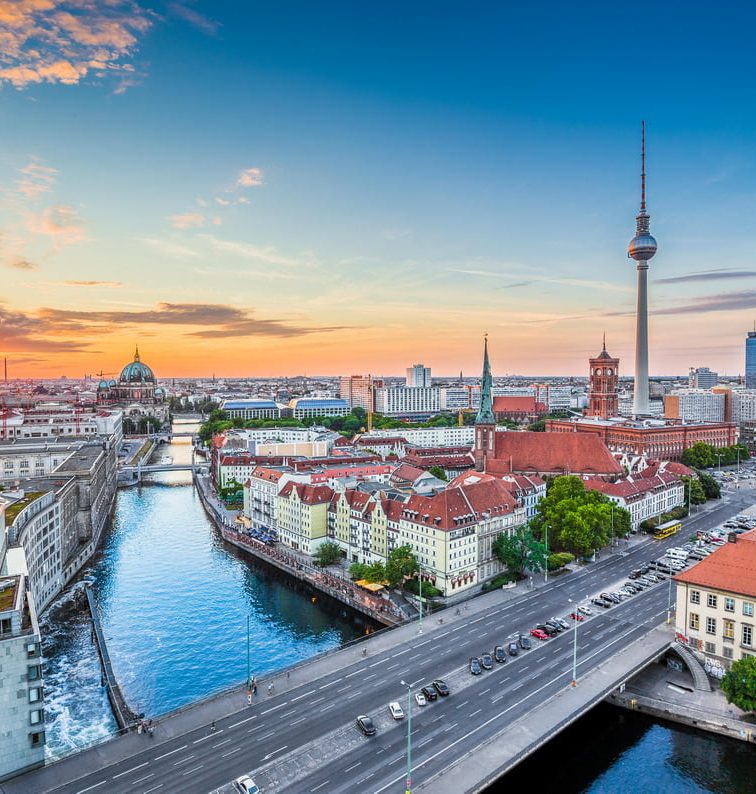Nestled in Europe’s diverse landscape, Albania is a realm brimming with unexpected marvels, deep-rooted traditions, and tales waiting to be told. Picture a country where meals unfold leisurely, enveloped in the aroma of Turkish-style coffee, and streets are adorned with a surprising abundance of Mercedes.
Here, the national drink, Raki, invites warmth with its potency, while the ancient code of Besa promises protection. Imagine discovering a land scattered with over 173,000 bunkers, yet untouched by the global reach of McDonald’s or Starbucks.
Each revelation about Albania unveils a facet of its distinct character, inviting the curious to explore further. Embark on a journey through the fun facts about Albania, where the past and present weave into an intriguing narrative, revealing a country that defies expectations and sparks curiosity.
1. The Symbolism and History of the Albanian Flag
The Albanian flag, recognized by its striking red field and black double-headed eagle, is a profound emblem of courage, strength, valor, and the bloodshed in the fight for freedom. This flag was officially adopted following Albania’s independence from the Ottoman Empire in 1912, with its design deeply rooted in the nation’s rich history and the valorous efforts of its national hero, Skanderbeg (George Kastrioti), who in 1443 raised a similar flag in defiance against the Turks. The flag’s red color symbolizes the bravery and sacrifices of the Albanian people, while the black double-headed eagle represents the sovereign state of Albania, echoing the heraldic symbols of the Byzantine Empire and medieval noble families within Albania.
The design has undergone several changes throughout history, reflecting Albania’s tumultuous journey through independence, monarchy, occupation, and communism before returning to its original insignia post-communism in 1992. Each alteration, from the addition of a crown under King Zog’s reign to a star during the communist era, tells a part of Albania’s story, marking periods of change and resilience. The modern flag, standardized in 2002, harks back to the symbol first raised by Skanderbeg, simplifying it to the powerful image we know today.
Interestingly, the double-headed eagle has been a symbol of Albania and its monarchs since the Middle Ages, showcasing the nation’s enduring spirit and rich cultural heritage. This emblem was revitalized by Albanian nationalists in the 19th and early 20th centuries as they fought for independence from the Ottoman Empire, symbolizing their struggle for freedom and unity.
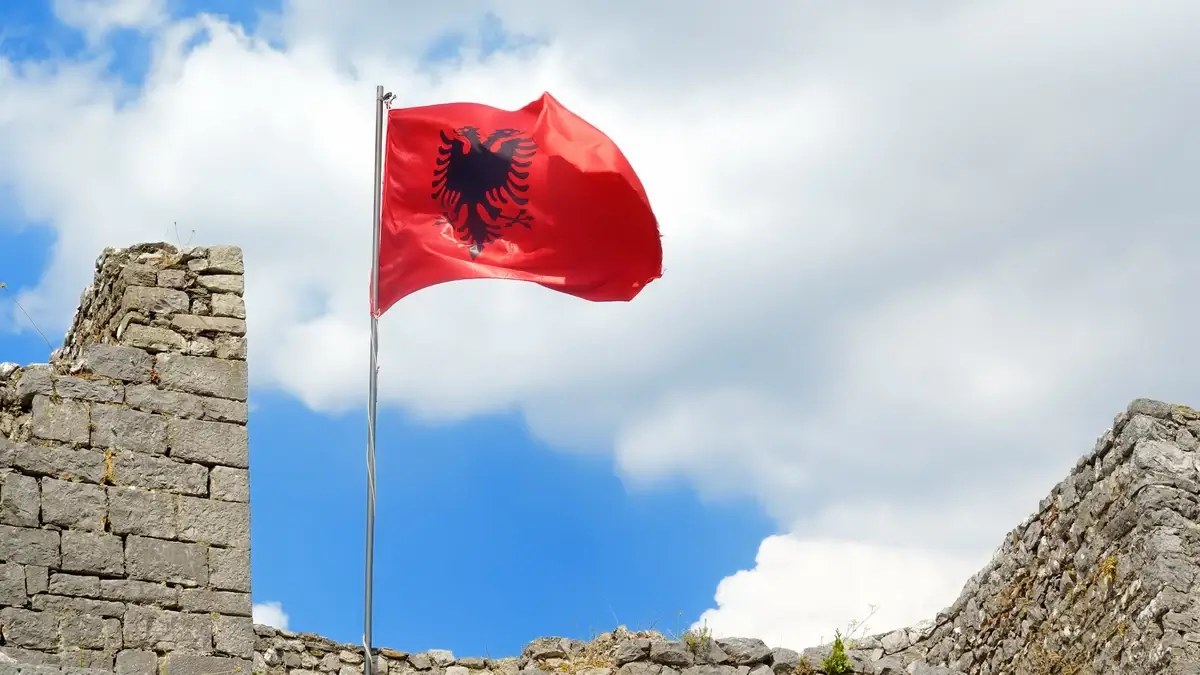
Image: tengrinews.kz
2. Land of the Eagles: Albania’s Deep-rooted Symbolism
Albania, known to its people as “Shqipëri,” translates to the “Land of Eagles,” a name that reflects not just a national symbol but a profound sense of pride and identity. The eagle, emblematic of strength, freedom, and vigilance, has been intertwined with Albanian history and culture for centuries. This bond is so intrinsic that the Albanian flag itself proudly bears a black, two-headed eagle against a red backdrop, a design rooted in the legacy of Prince Skanderbeg. This 15th-century hero galvanized a rebellion against Ottoman Turks, adopting a flag that has since become a timeless symbol of Albanian resilience and independence.
The earliest known depiction of the eagle in Albanian culture dates back to a stone carving from 1190, showcasing the long-standing connection between the nation and this majestic bird. Beyond mere symbolism, the eagle embodies the characteristics admired and aspired to by Albanians: strong energy, love of freedom, and a deep connection to their land. Spotting an eagle soaring in the sky is a moment of pride for Albanians, a reminder of their country’s enduring spirit and the special relationship they share with these powerful birds.
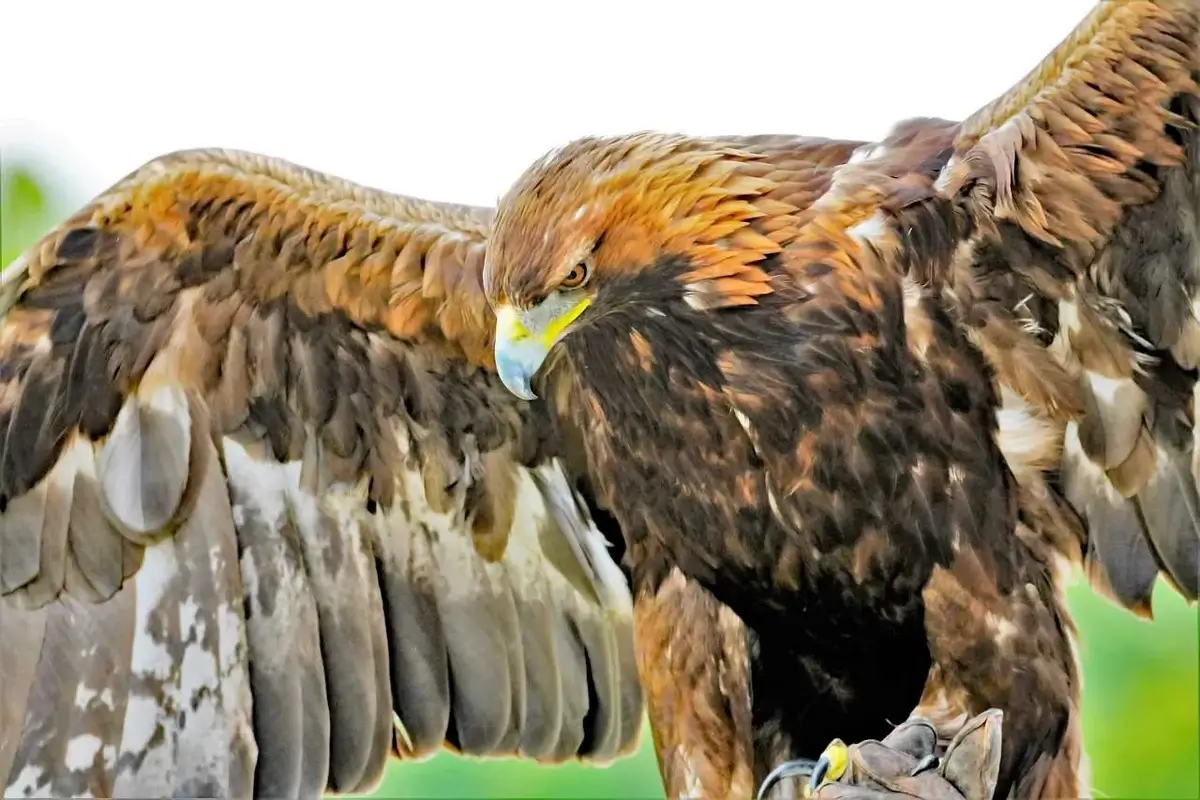
Image: restlessvoyager.com
3. First Atheist State: Albania’s Secular Revolution
In 1967, Albania embarked on a radical journey, becoming the world’s first declared atheist state under the leadership of Enver Hoxha. This bold proclamation was a culmination of policies aimed at eradicating religious influence, which had been intensifying since the communist regime’s inception. Hoxha’s administration pursued a systematic campaign to abolish religious practices, transforming places of worship into secular spaces and implementing strict laws against religious gatherings.
The move to declare Albania an atheist state was not merely a rejection of religion but was intertwined with nationalistic fervor, promoting a unified identity beyond religious divides. The government nationalized religious properties and launched aggressive propaganda to instill atheism, leading to the closure or conversion of all 2,169 religious buildings by the end of 1967. Clergy faced persecution, with many imprisoned or executed, and religious observance became a clandestine activity, conducted in secrecy to avoid severe repercussions.
Despite the regime’s efforts, the deep-rooted faith of many Albanians could not be entirely suppressed. The ban on religious practice was officially lifted in the early 1990s, heralding a new era of religious freedom and diversity. Today, Albania is a testament to religious tolerance, with a rich mosaic of faiths coexisting peacefully.
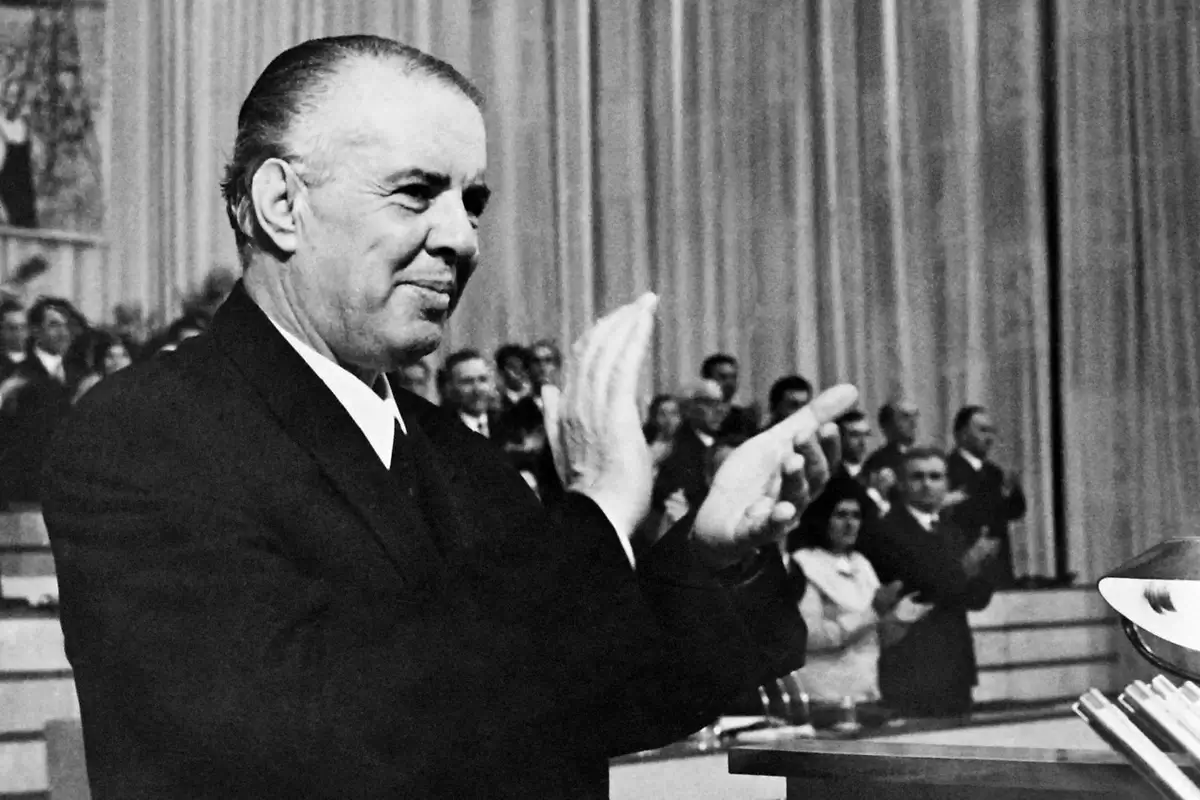
The photo features Enver Hoxha, the long-serving communist leader of Albania. Image: orf.at
4. Unique Sign Language in Albania
In Albania, a unique form of non-verbal communication exists where locals nod to indicate “no” and shake their head for “yes.” This practice, seemingly inverted from the norm observed in many Western cultures, highlights the deep cultural distinctiveness of the country.
The origins of this unique sign language are not fully understood, but it’s believed to be deeply rooted in Albanian traditions and history. While prevalent across the country, it’s particularly noted in southern regions. This peculiar form of communication serves as a fascinating example of Albania’s rich cultural heritage.
5. The Uniqueness of the Albanian Language
The Albanian language, or “shqip,” represents a unique branch within the Indo-European family, distinct from all other languages. It’s spoken primarily in Albania and Kosovo, with its roots potentially linked to the ancient Illyrian language. The language’s first documented mention dates back to 1284, showcasing its rich historical depth.
Albanian is divided into two main dialects: Gheg and Tosk, highlighting the linguistic diversity within the country itself. This linguistic uniqueness underscores Albania’s rich cultural heritage and historical complexity.
6. Bunkers Everywhere: Albania’s Concrete Legacy
Albania is a country marked by the presence of over 750,000 concrete bunkers, a relic of its isolationist past under the rule of Enver Hoxha from the 1960s to the 1980s. These bunkers, averaging 14.7 per square mile, were part of Hoxha’s extreme defensive measures against perceived threats.
Despite their intended military purpose, these bunkers were never used in conflict and now dot the landscape, serving various new purposes from cafes to homes. Their construction was a significant economic burden, diverting resources from much-needed infrastructure development.
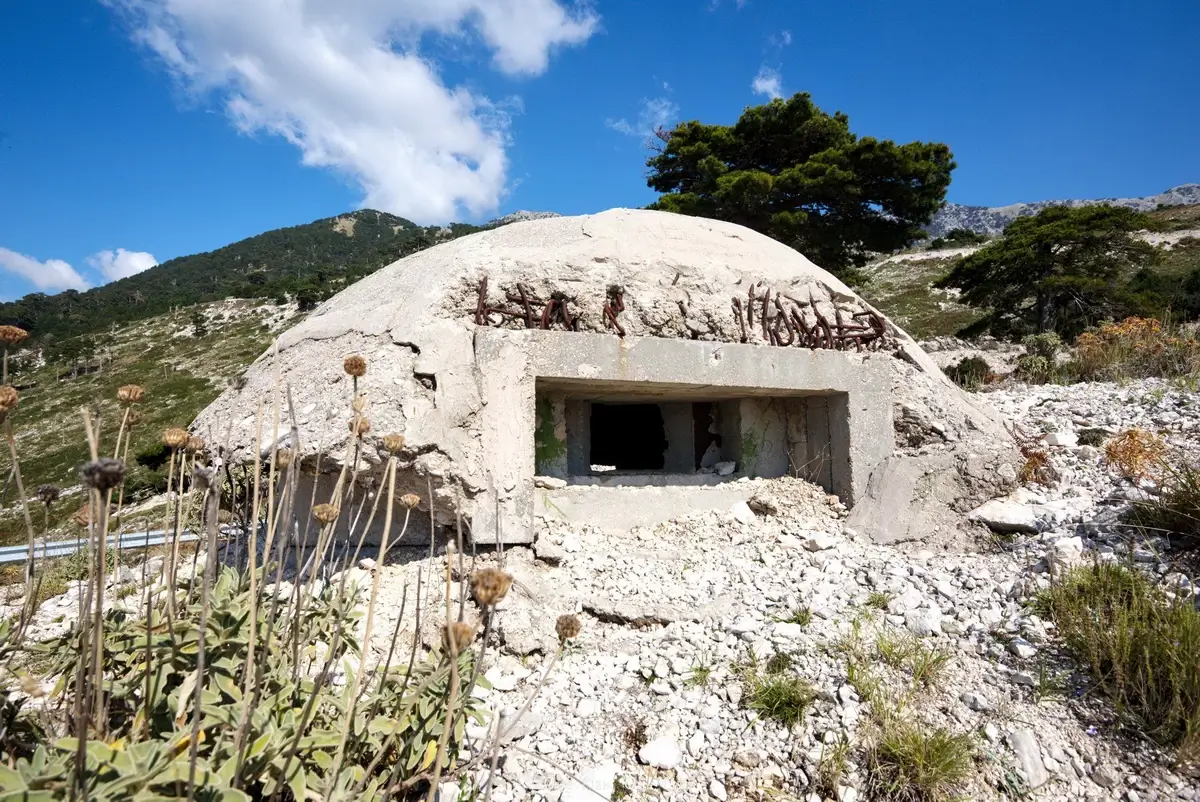
Image: oneman-onemap.com
7. Mercedes Galore: Albania’s Fascination with a German Legacy
In Albania, Mercedes-Benz cars are more than just vehicles; they’re a cultural phenomenon deeply rooted in the nation’s history and psyche. The abundance of these German automobiles in Albania, often regarded as symbols of success and reliability, can be traced back to several key factors.
Firstly, during Albania’s isolation under a strict communist regime, luxury goods and imports were heavily restricted. However, government officials were sometimes allowed luxury cars, including Mercedes-Benz, which perhaps seeded a cultural affinity for the brand. After the regime’s collapse in the early 1990s, the country saw a surge in demand for imported luxury vehicles, with Mercedes-Benz emerging as a preferred choice. This trend was reinforced by Albanian expatriates returning from Germany, bringing with them Mercedes cars, which further fueled the brand’s popularity.
Moreover, Mercedes-Benz cars are known for their durability and ability to handle Albania’s challenging road conditions, making them practical choices for many drivers. The vehicles’ sturdiness on rough and unpaved roads has made them a popular choice for those needing reliable transportation in rural and urban settings alike.
Financial practicality also plays a role. Albania’s high import taxes make new cars expensive, but used Mercedes-Benz vehicles are seen as good investments. They’re in high demand, retain their value well, and provide a good return on investment, making them financially appealing to many Albanians.
This blend of historical, cultural, and practical reasons has led to Mercedes-Benz cars becoming ubiquitous on Albanian roads, making the country one of the places with the highest number of Mercedes per capita globally.
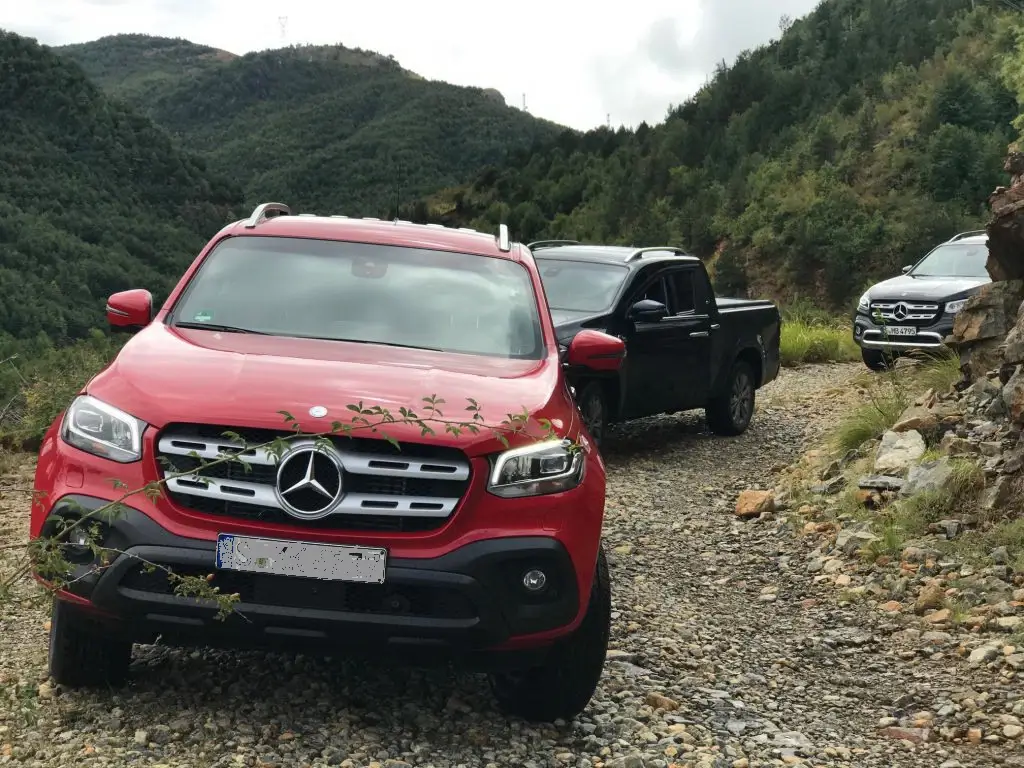
Image: khulekanionwheels.com
8. Natural Disaster Risks in Albania
Albania’s stunning landscapes and rich cultural heritage are contrasted by its vulnerability to natural disasters. Ranked among the highest in Europe for disaster risk, Albania’s geography and climate make it particularly susceptible to a variety of natural hazards. The country has faced significant challenges due to floods, storms, droughts, and sea-level rise. A study highlighted Albania’s extreme event risk, positioning it second only to Russia in Europe and Central Asia for such vulnerabilities.
From 1995 to 2015, an average of 30,000 Albanians were affected by natural disasters annually, impacting over 95% of municipalities. The devastating earthquake in 2019 underscored this vulnerability, affecting over 200,000 people and causing significant economic damage, equivalent to 6.4% of the GDP in damages and additional losses of 1.1%. This event was a stark reminder of the potential scale of disaster impacts in Albania.
The country is at the forefront of adapting to these challenges, with legislative measures and strategies aimed at improving disaster risk management and resilience. The adoption of a new law on civil protection in July 2019 marks a progressive approach to managing disaster risks, requiring national, provincial, and local risk assessments every three years and the establishment of a disaster loss database.
Furthermore, the World Risk Index 2019 identified Albania as having the highest level of disaster risk in Europe, emphasizing the need for comprehensive financial protection strategies against natural disasters. The economic and social costs of these disasters are expected to rise, exacerbated by climate change’s potential to increase the severity and frequency of weather-related disasters.
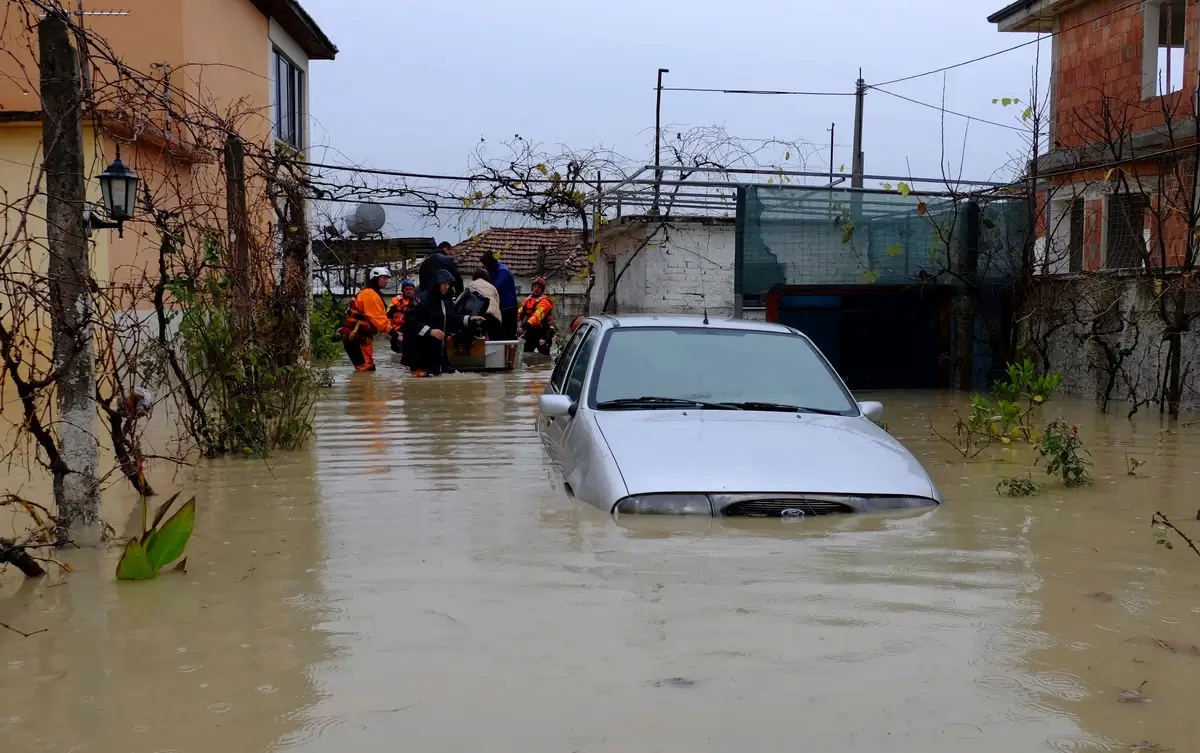
Officials assisted a family in evacuating their residence due to intense rainfall in the village of Hasan, located approximately 25 kilometers north of Tirana, on Friday, 1 December 2017. (AP Photo/Hektor Pustina)
9. The Accursed Mountains: Albania’s Mythical Alps
The Accursed Mountains, also known as the Albanian Alps, stretch across Albania, Kosovo, and Montenegro, presenting not only an area of natural beauty but also a realm steeped in legend and folklore. These mountains reach their zenith at the Peak of Jezerca at 2694 meters, surrounded by remote villages that are the custodians of some of Albania’s oldest traditions.
The name “Accursed Mountains” itself invites curiosity and speculation. One legend tells of a desperate mother fleeing with her children from enemies, cursed the mountains for their lack of water, condemning them to eternal aridity. Another tale suggests the name originated from Slavic soldiers, who, struggling to navigate the treacherous terrain, dubbed them “cursed” or “Prokletije” in their language.
Albanian mythology enriches the narrative tapestry of these mountains further, with stories of fairies considered as both inhabitants and protectors of the alpine wilderness. These myths underscore the resilience and loyalty of the mountain people and add a mystical dimension to the already breathtaking scenery.
The rugged beauty of the Accursed Mountains is now complemented by the Accursed Cultour Trail, which integrates the rich cultural heritage of the local communities into the hiking experience. This initiative aims to preserve and showcase the colorful legends, verbal history, songs, dances, crafts, and cuisine of the inhabitants of this remote region. The project not only enhances the adventure tourism aspect but also engages local communities in the tourism industry, promising an improvement in their quality of life.
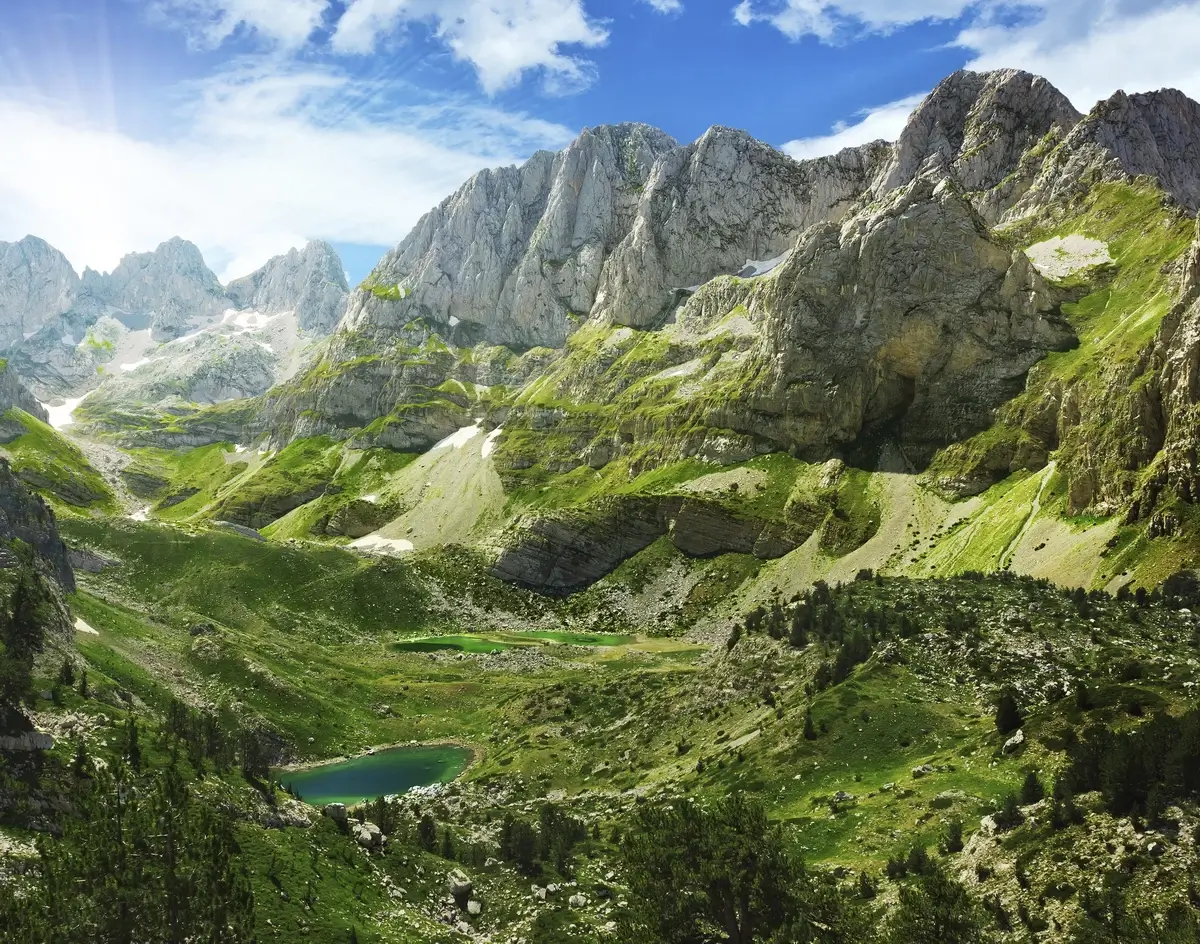
Accursed Mountains in Albania. Image: lonelyplanet.com
10. Unique Culinary Landscape of Albania: Beyond McDonald’s and Starbucks
Albania’s culinary scene presents a refreshing deviation from the global fast-food chains that dominate many countries’ food landscapes. Unlike many of its European counterparts, Albania does not host McDonald’s or Starbucks. This absence is a testament to the country’s rich and unique culinary traditions, which have been preserved and continue to thrive amidst the globalization of food culture.
The Albanian food scene is vibrant and diverse, with local chefs and eateries stepping up to offer both traditional Albanian dishes and fast-food favorites without the footprint of the world’s biggest chains. For instance, while you won’t find a McDonald’s burger or a Starbucks latte, Albania has welcomed other international fast-food brands such as KFC and Burger King, alongside a plethora of local joints like Kolonat, Big Bite, and Goody’s that offer a delightful taste of Albania’s fast-food culture.
This distinctive feature of Albania not only highlights its unique culinary landscape but also points towards a broader inclination towards maintaining cultural authenticity and supporting local businesses. It encourages visitors and locals alike to explore the rich array of Albanian cuisine, from the traditional slow-cooked dishes and freshly baked bread to local interpretations of pizzas, burgers, and even tacos, ensuring a gastronomic adventure that is as authentic as it is delightful.
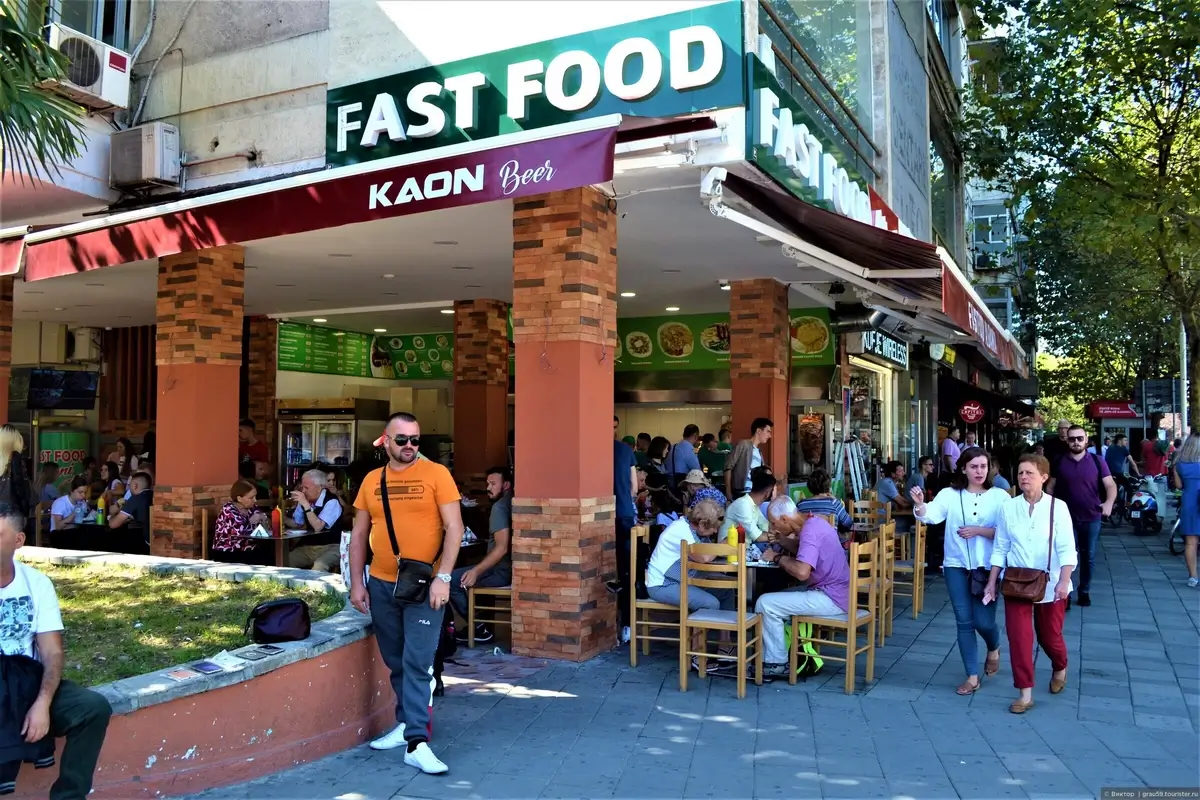
Image: tourister.ru
11. Hydroelectric Power Leader: Albania’s Renewable Energy Triumph
Albania distinguishes itself as a unique example in the global energy landscape by sourcing 100% of its electricity from renewable energy, primarily through hydroelectric power. This remarkable achievement positions Albania as a global leader in renewable energy utilization, showcasing its commitment to sustainable and eco-friendly power generation.
The cornerstone of Albania’s energy sector is its hydroelectric power plants, which harness the natural flow of its abundant rivers. Projects like Skavica, Devolli, Vjosa, Kalivaci, Ashta, Valbona, and Tropojë contribute significantly to the nation’s electricity production, with capacities ranging from 40 MW to 400 MW. This extensive reliance on hydroelectricity not only underscores Albania’s innovative use of natural resources but also its potential to further expand into other renewable energy sources.
Beyond hydroelectricity, Albania is exploring other renewable avenues such as wind and solar energy. While wind farm projects are yet to be completed, there’s substantial interest and investment in the pipeline, indicating a diversification of Albania’s renewable energy portfolio. The government’s preparation for a significant investment in a wind power plant, estimated to be around 150 MW, marks a pivotal step towards embracing a wider array of renewable resources.
Albania’s reliance on hydroelectric power is not without its challenges, notably the environmental and social concerns associated with constructing new hydropower plants. Projects in sensitive areas like the Valbona Valley and the Vjosa River have sparked protests, highlighting the need for a balanced approach to energy development that considers ecological preservation and community impact.
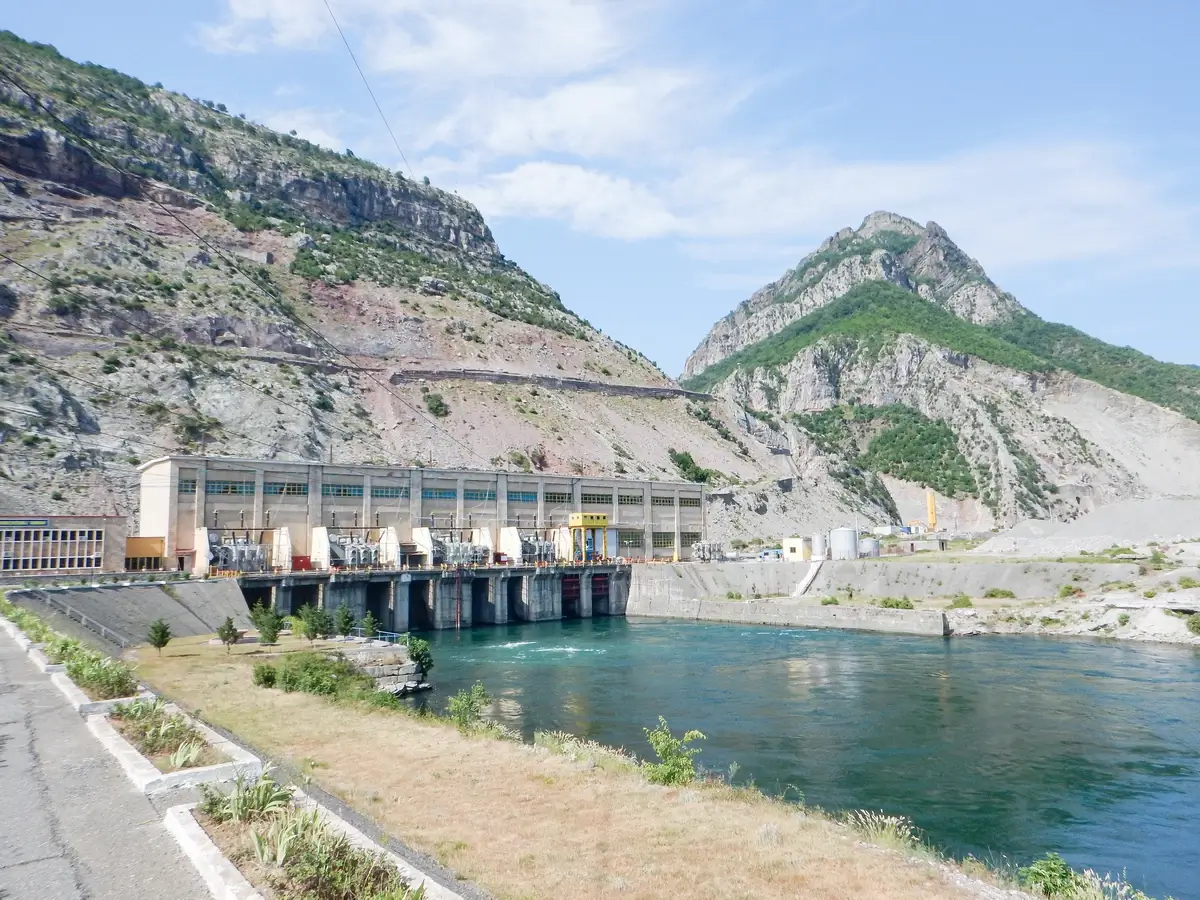
Image: andritz.com
12. Oil and Mineral Rich: Albania’s Natural Wealth
Albania, a country with a rich history and diverse geography, also boasts significant natural resources, making it a notable player in the global mining and energy sectors. It’s not just the stunning landscapes and cultural heritage that draw attention to this Balkan nation; its underground is just as fascinating.
Albania stands out as one of Europe’s largest chromium producers. The Bulqizë mine, located in central Albania, is the crown jewel of its mining sector. This mine is not only the largest chromium reserve in Albania but also ranks among the largest in Europe, with estimated reserves of 2.82 million tonnes of ore grading 45.83% chromium metal. The significance of the Bulqizë mine extends beyond its current reserves, as it is part of the Bulqizë Massif, a 370 square kilometers area rich in chromium deposits.
On the energy front, Albania’s oil reserves are a testament to its untapped potential. With proven oil reserves of 168,332,000 barrels as of 2016, Albania ranks 59th in the world. This places it in a unique position in the Western Balkans, being the largest producer of crude oil in the region. The Patos-Marinza oil field, the biggest on-shore oil field in Europe, alone has proven reserves of about 2 billion barrels.
Albania’s mining sector is a cornerstone of its economy, with a focus on increasing the production and processing of minerals like chrome, copper, and nickel. The government’s strategy aims to enhance these minerals’ competitive advantage both domestically and internationally. The privatization of coal and nickel mines and the operation of the largest copper mines through a concession contract highlight the sector’s dynamic nature.
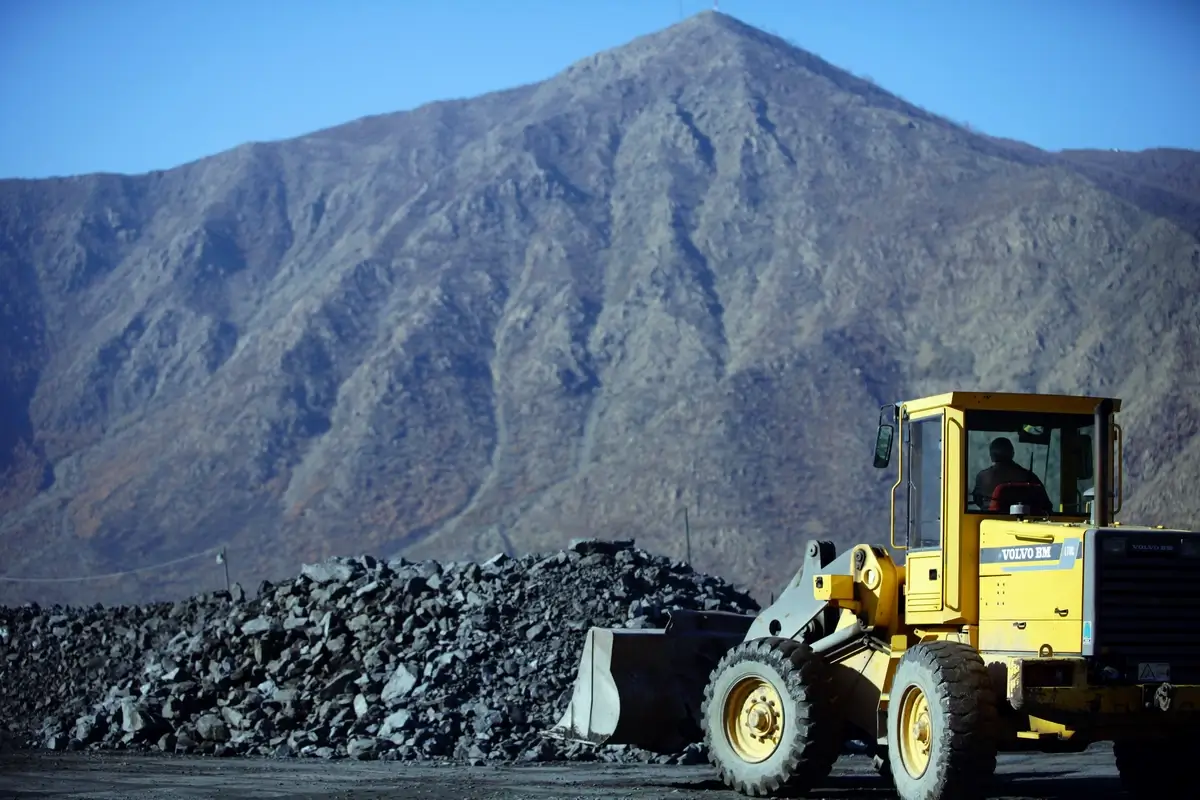
Image: invest-in-albania.org
13. Southernmost Glaciers
The Accursed Mountains, straddling Albania and Montenegro, hold the title for Europe’s southernmost glaciers, a testament to Albania’s rich geographical diversity. These ancient icy formations nestle within the rugged terrain of the Albanian Alps, also known as Prokletije, which extends from northern Albania into Kosovo and eastern Montenegro. The highest peak in this range within Albania is Maja Jezercë, standing tall at 2,694 meters, making it the second highest peak in Albania and the pinnacle of the Dinaric Alps. This area, largely unexplored and steeped in natural beauty, showcases dramatic landscapes shaped by the forces of nature over millennia.
These glaciers, including the Mertur cirque glacier and the Maja Jezercë glaciers, are remarkable for their presence at such southern latitudes, lying between latitudes 42°23’55” and 42°26’27”. Their existence is a striking indicator of the climate and topographical conditions unique to the Accursed Mountains. Despite their small size, these glacial masses are critical for understanding climate change’s impact on Europe’s southernmost ice. The glaciers of Albania and Montenegro are among the lowest altitude glaciers at this latitude in the Northern Hemisphere, offering a unique glimpse into the resilience of ice in a warming world.
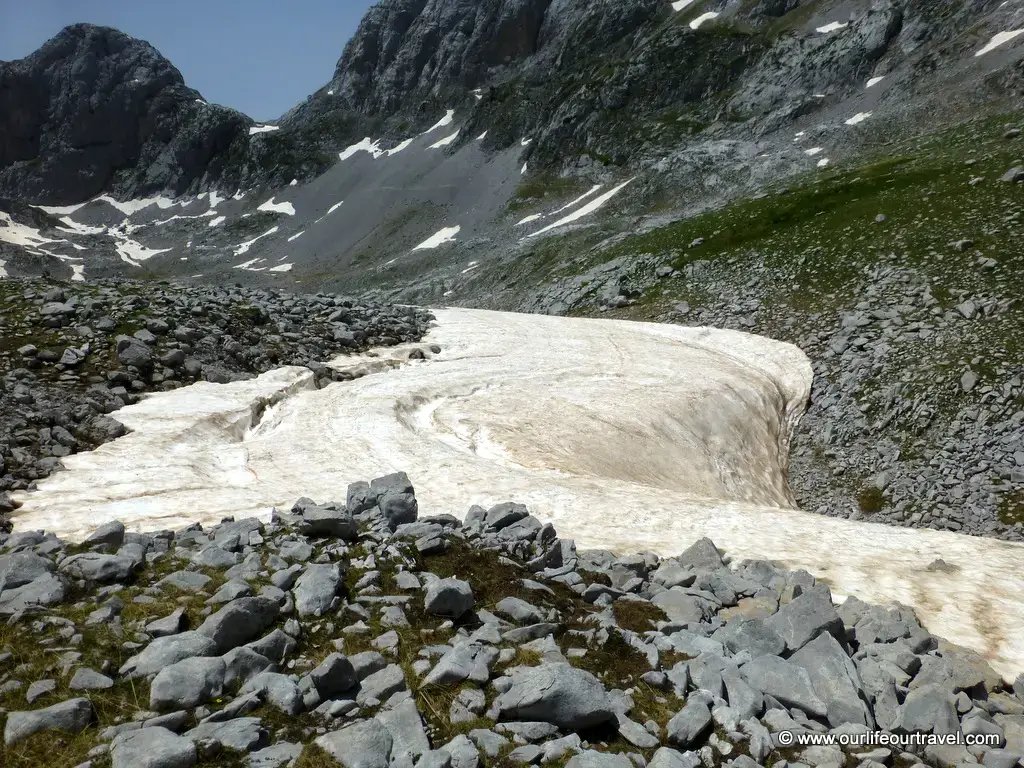
Image: ourlifeourtravel.com
14. Raki: National Drink of Albania
Raki, Albania’s national drink, is not merely an alcoholic beverage; it’s a cultural emblem that brings people together, fostering a sense of community and camaraderie. This traditional spirit is deeply rooted in Albanian traditions, produced everywhere in the country, both professionally and in an artisanal manner. Skrapar, a region in Albania, is renowned for its raki production, especially its strong spirit with an alcohol content of up to 45%. The process involves the fermentation of grapes or other fruits for about 25 days, followed by distillation in copper pots, a method that has been refined over centuries.
The diversity in raki’s production across Albania is fascinating. Depending on the region, raki can be made from grapes, plums, or even berries, showcasing the variety of local agricultural products. In southern Albania, grapes are predominantly used, whereas in areas like Korçë or Pogradec, plum-based raki is common. This regional variation highlights the adaptability of raki production to local fruit availability, making each type unique in its flavor profile.
Consumption of raki is a practice embedded in Albanian lifestyle, enjoyed before or after meals, and even in the morning alongside coffee. It symbolizes the Albanian knack for hospitality, often served with meze to complement its robust flavors. The production and consumption of raki are not just about enjoying an alcoholic drink; they are about preserving a centuries-old tradition that plays a significant role in Albanian social and cultural life.
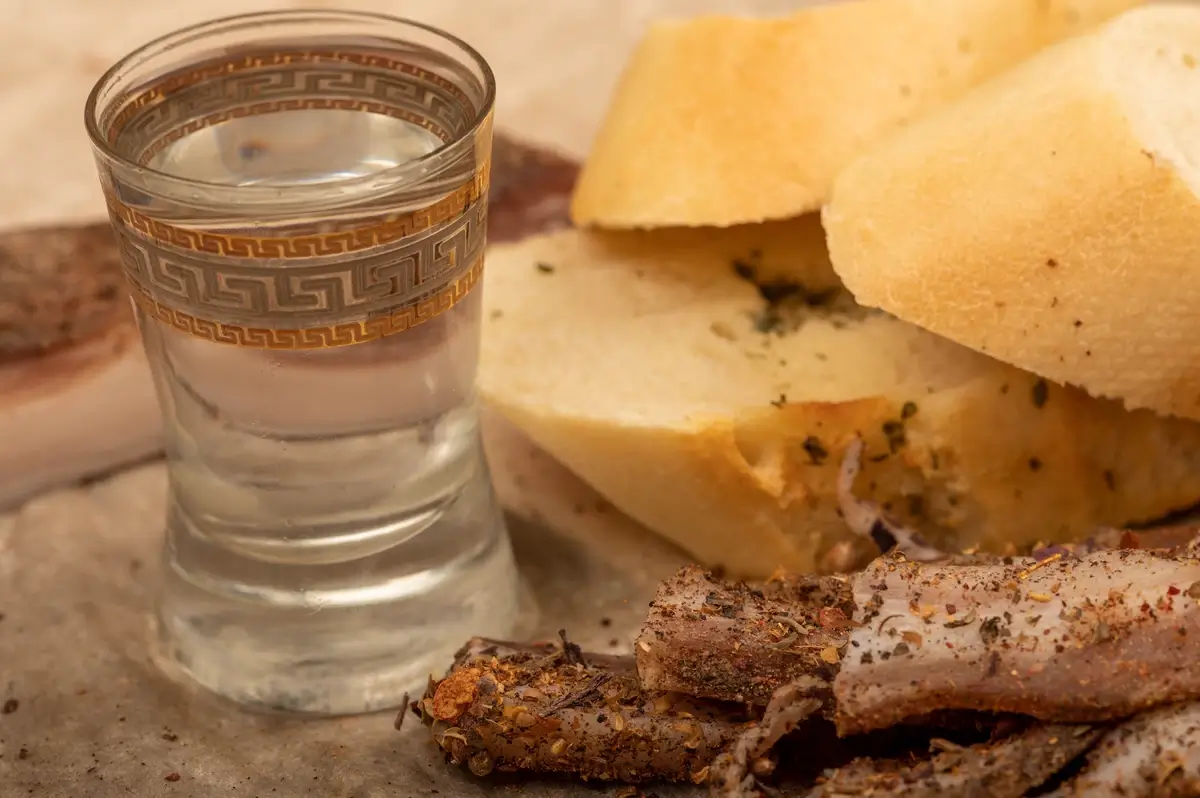
Image: tasteatlas.com
15. The Tradition of Bujqësia: Albania’s Mountain Grazing
In the picturesque landscapes of Albania, a centuries-old tradition known as “bujqësia” sees families moving their livestock to the mountain pastures for summer grazing.
Agriculture plays a vital role in Albania’s economy, with livestock farming being a significant component. The country’s agriculture sector contributes substantially to its GDP, with livestock accounting for a significant share. This is evident in the widespread ownership of cattle, sheep, goats, and pigs among the rural population. The privatization of agriculture has led to increased livestock numbers, highlighting the importance of animal husbandry in Albanian rural life.
The “bujqësia” tradition underscores the symbiotic relationship between Albania’s pastoral communities and their environment. Moving herds to higher altitudes during summer not only provides animals with lush grazing grounds but also helps maintain the ecological balance of these landscapes. This practice is rooted in the understanding that seasonal grazing supports both animal health and pasture rejuvenation, embodying a sustainable approach to livestock management.
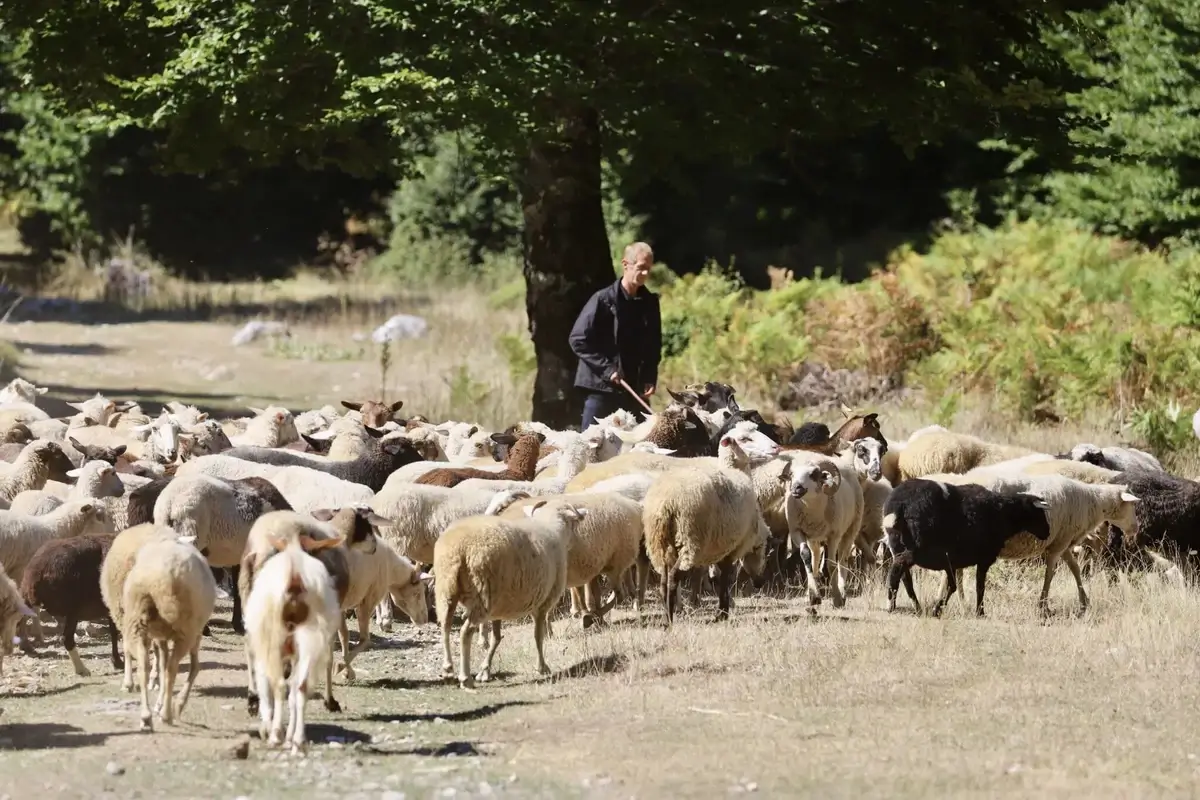
Image: birdlife.org
16. The Shadow of Gjakmarrja: Blood Feuds in Albanian Culture
Gjakmarrja, or blood feuds, has been a dark and complex element of Albanian culture, deeply rooted in the traditional code known as the Kanun of Lekë Dukagjini. This social obligation dictates that an offense or murder within one family must be avenged by taking the life of the offender or their kin, perpetuating a cycle of violence that can last for generations. Historically, this practice allowed for self-governance in the absence of state law enforcement, particularly in the mountainous regions where Albanian highlanders lived autonomously.
During the Ottoman era, blood feuding was widespread among the Malsors (Albanian highlanders), with tribal laws enforcing a “head for a head” principle. Despite the Ottoman Empire’s efforts and the disapproval of some Albanian and Ottoman figures, who viewed gjakmarrja as inhumane and a source of social disruption, the practice persisted due to the strong influence of tribal law.
In recent years, the collapse of communism and the weakening of state control have led to a resurgence of gjakmarrja in remote parts of Albania and Kosovo. The malfunctioning judiciary system, perceived as corrupt or ineffective by many Albanians, has contributed to this resurgence. Families engaged in blood feuds often live in poverty and isolation, with their lives and those of their children severely restricted.
Efforts to reconcile blood feuds have been made, with notable movements in Kosovo during the early 1990s aiming to end the cycle of vengeance. Yet, despite these efforts, many families remain affected, their lives overshadowed by the threat of retaliation. The Kanun itself offers paths towards reconciliation and peace, but misinterpretation and selective adherence have allowed the cycle of bloodshed to continue.
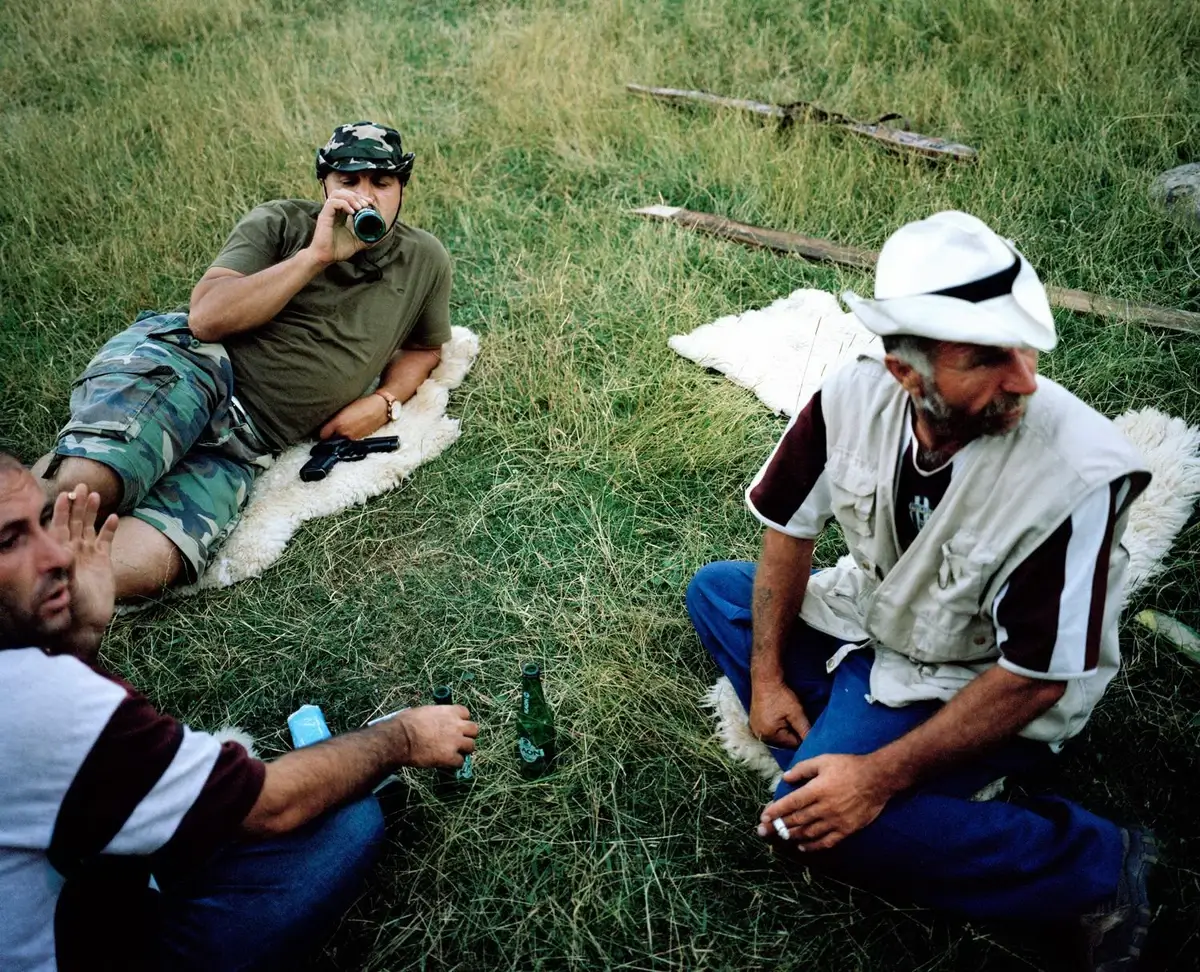
Image: marcokesseler.com
17. Albania: A Sun-Soaked Haven
Albania, with its enchanting natural beauty and vibrant culture, is a beacon for sun-seekers. This small Balkan country is graced with an average of 300 sunny days a year, particularly along its coast, making it a perfect destination for those craving sunshine and warmth. The Mediterranean climate ensures hot, dry summers and mild, wet winters, with coastal areas like Saranda, Vlora, and Durres basking in the most sunlight.
Saranda, on the southern coast, stands out as one of the sunniest cities in Albania, boasting an average of 2,924 hours of sunshine annually. Vlora and Durres are not far behind, with around 2,500 hours of sunshine per year, offering idyllic conditions for beachgoers and outdoor enthusiasts. Even the capital, Tirana, and the northern city of Shkoder enjoy ample sunshine, making the entire country a luminous destination.
To fully enjoy Albania’s sunny disposition, the summer months from June to August are recommended, when the country transforms into a sunbather’s paradise with temperatures around 30°C (86°F). However, the beauty of Albania’s sunshine extends beyond the summer, with spring and autumn providing fantastic conditions for exploring its cities, mountains, and the famed Albanian Riviera without the peak season crowds.
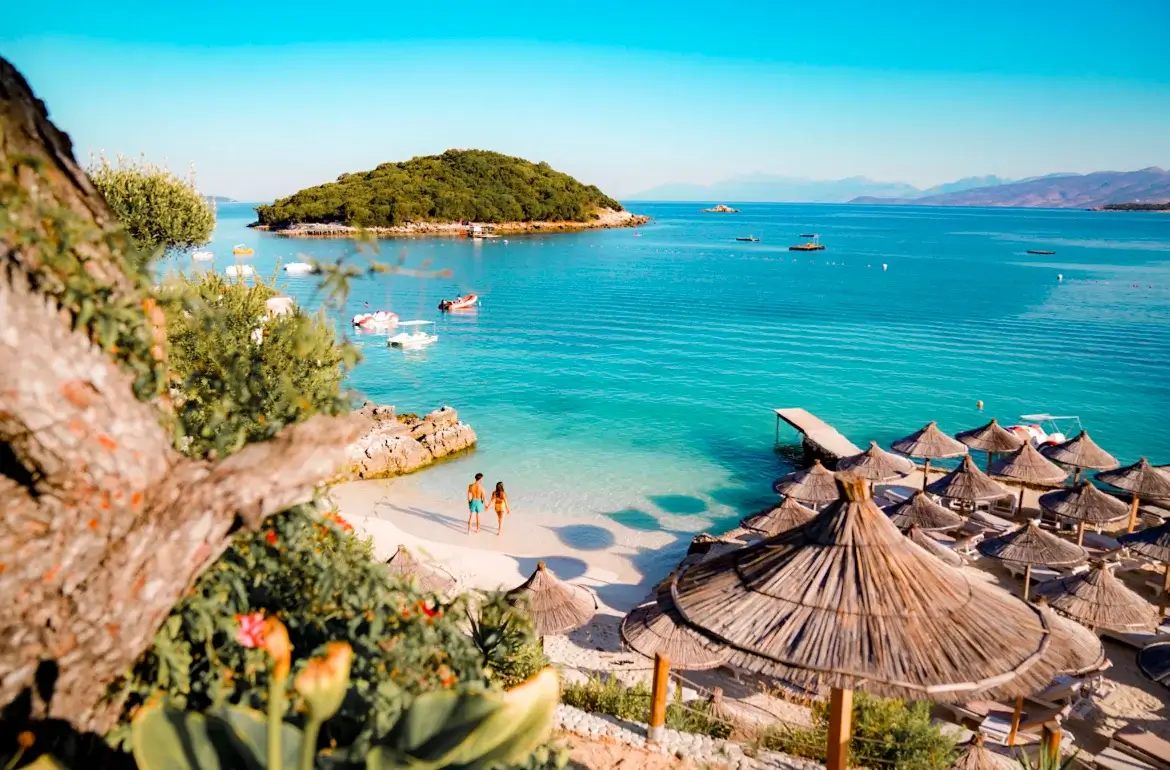
Image: scratchyourmapa.com
18. The Dhampir: Between Myth and Reality in Albanian Folklore
Albanian folklore is a treasure trove of mythical creatures and supernatural beings, among which the “dhampir” holds a particularly intriguing place. This creature, born from the union of a vampire and a human, embodies the complex interplay of fear and fascination that characterizes human interactions with the supernatural. The term “dhampir” itself is thought to have evolved from Albanian and Slavic influences, suggesting a fusion of cultural beliefs about vampires and their progeny.
Dhampirs are considered to walk the line between the living and the undead, possessing abilities that set them apart from ordinary humans. Legends suggest that dhampirs, particularly those of paternal vampire descent, could see invisible vampires and wielded powers to practice sorcery. This unique capability often led them to become vampire hunters, a profession that would be passed down through generations. Unlike their vampire ancestors, dhampirs are described as integrating into society, eating normally, and showing no attraction to blood.
The dhampir myth reflects deeper themes within Albanian and Balkan folklore, such as the conflict between good and evil, the power of bloodline and heritage, and the boundaries between the natural and supernatural worlds. These creatures are often portrayed with specific physical traits in folklore, such as untamed dark hair and a cunning or courageous nature, marking them as distinct yet part of the community.
In modern culture, the dhampir has transcended its folkloric origins to become a popular figure in comics, movies, and literature, embodying the eternal human fascination with the vampire myth and the idea of living between two worlds. Characters like Blade from Marvel comics and Rayne from the BloodRayne series are contemporary incarnations of this ancient legend, showcasing the enduring appeal of the dhampir as a symbol of power, mystery, and otherness.

Image: iFunFact
19. The Fustanella: A Symbol of Albanian Heritage
The traditional Albanian attire, known as the “Fustanella,” is a skirt-like garment that embodies the rich history and cultural identity of Albania. This traditional piece, observed by British painter Edward Lear during his travels in the mid-19th century, was particularly characteristic of the Albanian national costume. The fustanella, made of heavy home-woven linen cloth, features around sixty pleats and was historically long enough to cover the whole thigh, leaving only the lower leg exposed. It was a garment reserved for the elite during significant and formal occasions, such as dispute resolutions and election of local tribal representatives among the highlanders of northern Albania.
The attire is complemented with various types of headgear, such as the cone-shaped qeleshe or the round plis worn in central and northern Albania, respectively. Men also don traditional socks known as çorape and shoes called opinga, enhancing the distinctiveness of the Albanian traditional dress.
Albanian traditional dress varies significantly across different regions of the country, with over 500 variations known throughout Albania and Albanian-speaking communities. Each region has its unique style, adorned with symbols of Illyrian origin such as eagles, stars, suns, moons, and serpents, woven on traditional looms.
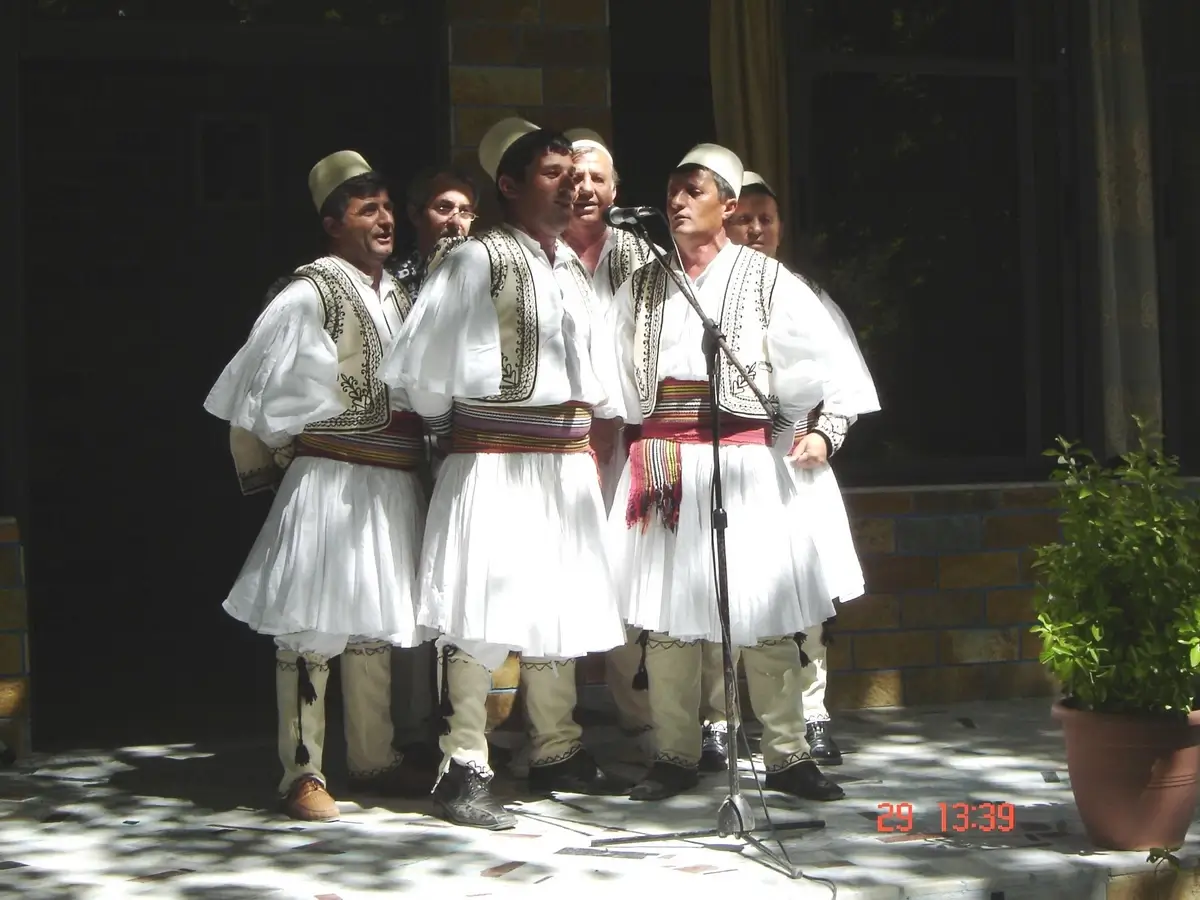
Image: Pinterest
20. Albania’s Verdant Cloak: A Forested Realm
Albania, nestled in Southeast Europe, is celebrated not only for its profound history and dazzling coastlines along the Adriatic and Ionian Seas but also for its lush landscapes. This country stands out as one of Europe’s most forest-rich areas, with its green expanses covering about 36% of the territory. These forests, predominantly broadleaf with a significant presence of coniferous species, are vital for the biodiversity and ecological balance within the Mediterranean Basin’s biodiversity hotspot.
The forests in Albania are teeming with life, supporting a wide variety of plant and animal species. The rich biodiversity includes over 3,200 vascular and 2,350 non-vascular plant species, offering a sanctuary for both endemic and sub-endemic species. The diverse ecosystems, ranging from dense forests to wetlands and coastal areas, are under protection through a network of national parks and nature reserves. These protected sites are essential not only for conserving biodiversity but also for providing recreational opportunities that encourage sustainable interaction with nature.
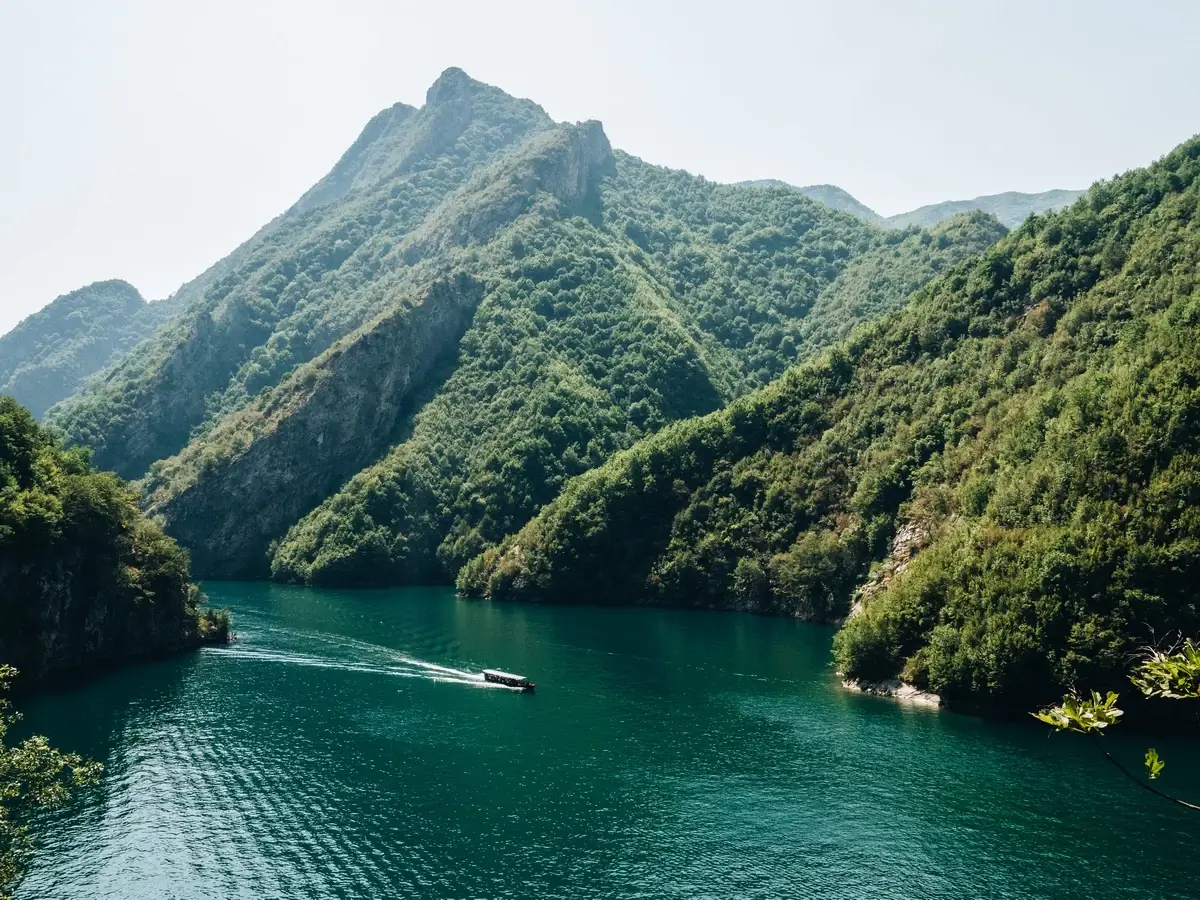
Image: lonelyplanet.com
21. Albanian Wedding Traditions: Bridging Families with Gifts and Rituals
Albanian weddings are vibrant affairs that celebrate not just the couple, but the unity of their families. Central to these traditions is the exchange of gifts, where the groom’s family presents items like gold and clothes to the bride’s family, symbolizing respect and welcome. The wedding festivities extend over a week, filled with traditional music, dance, and communal joy. It’s a time for friends and family, often traveling long distances, to partake in the celebration, emphasizing community and familial bonds.
One poignant tradition is the ceremony of picking up the bride, a nod to her transition to a new life. Modern adaptations include a car procession, but the essence of respecting and honoring family ties remains unchanged. A unique tradition involves the groom’s mother offering the bride bread and honey, wishing the couple a sweet life together. This act underscores the importance of a harmonious beginning.
While some customs have evolved, such as the shift from home celebrations to venues, the core values of joy, unity, and cultural heritage continue to thrive, ensuring the wedding is an unforgettable experience.
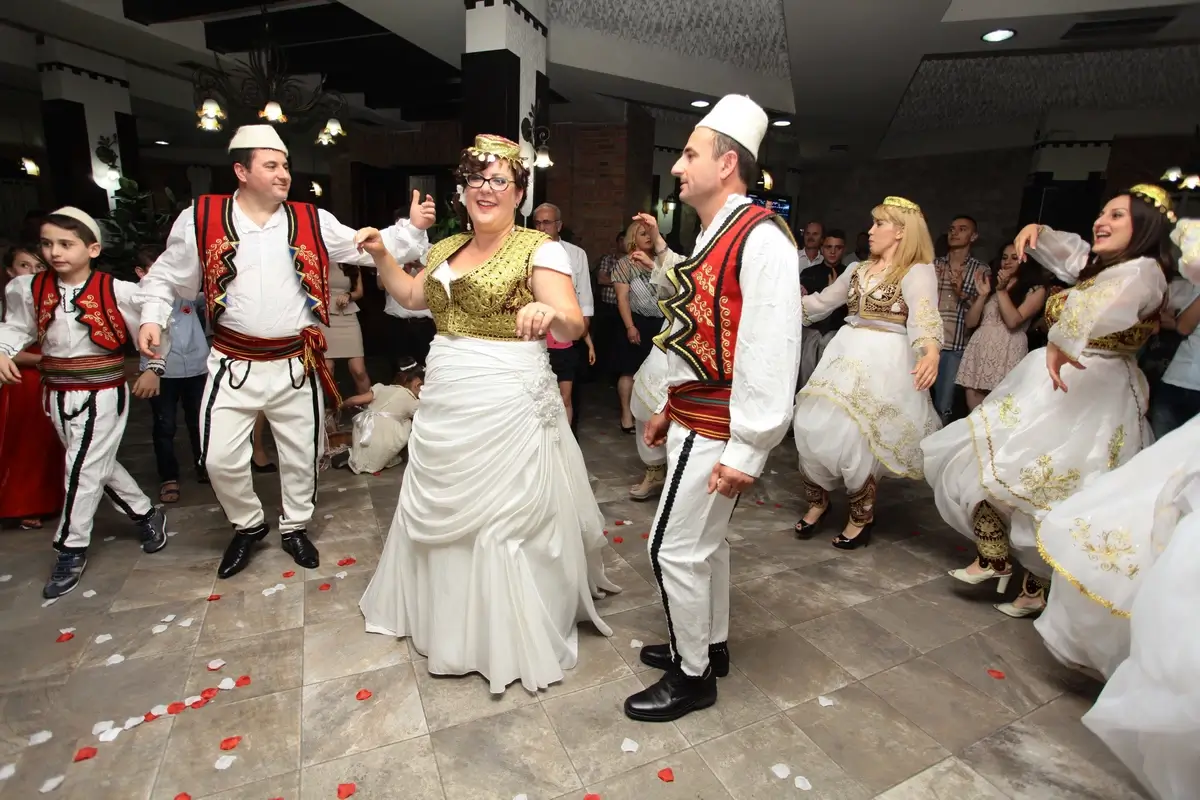
Image: albaniatania.wordpress.com
FAQ
What is Albania best known for?
Albania is celebrated for its stunning landscapes, rich history, and unique cultural heritage. Highlights include the beautiful Blue Eye spring, a natural wonder with crystal-clear blue water, and the iconic bunkers scattered across the country, remnants of its communist past. Albania is also renowned for its UNESCO World Heritage towns, Berat and Gjirokaster, showcasing well-preserved Ottoman architecture. The country’s delicious Mediterranean cuisine and the traditional Albanian dance add to its cultural richness.
What is a fun fact about Albanian music?
A fun fact about Albanian music is its traditional dance, often performed in groups with movements involving stomping, clapping, and singing, usually accompanied by traditional instruments like the lahuta and drums. These dances are a vibrant part of Albanian weddings and celebrations.
How old is Albania in years?
The modern nation-state of Albania declared its independence from the Ottoman Empire on November 28, 1912. As of 2024, Albania is 112 years old as an independent country.
Is Albania a rich or poor country?
Albania is considered a developing country with a lower-middle-income economy. It has shown significant progress in economic development and reforms since the 1990s but still faces challenges related to infrastructure and certain socio-economic indicators.
What is Albania best at?
Albania excels in offering unique travel experiences, from exploring its natural beauty like the Albanian Riviera’s isolated beaches to indulging in its rich culinary scene with traditional dishes like Tavë Kosi. Its historical sites and the hospitality of its people make it an exceptional destination.
Why is Albania not safe?
While Albania is generally safe for tourists, concerns have been raised about road safety due to less developed infrastructure and driving habits. It’s always advisable to stay informed about local laws and practices when visiting.
Who visits Albania the most?
Tourists from neighboring countries and across Europe are drawn to Albania for its natural beauty, historical sites, and warm Mediterranean climate. Its affordability and the allure of less-explored destinations make it particularly attractive to a diverse group of travelers.


